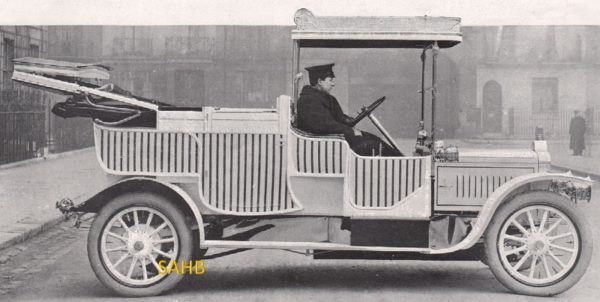
Fourteen companies decided to name their cars Standard; this example is from the best-known of them. The Standard Motor Co. Ltd. was founded in Coventry in 1903 by Reginald William Maudslay of the famous engineering family. His great-grandfather Henry Maudslay had pioneered the marine steam engine and had invented the screw-cutting lathe and the micrometer. Reginald’s brother Cyril founded the Maudslay Motor Co. in 1901.
Maudslay had a clear idea of the car he wanted. For a start, he chose the name to reflect his determination that its components would be based on tried and tested principles ‘accepted as reliable standards’. Secondly, he sketched out his ideas for the car and handed them to the designer Alexander Craig, who had also designed the first cars of Lea Francis and Singer.
The first Standard was powered by a single-cylinder oversquare (127 x 76.2mm) horizontal engine, coupled to a three-speed gearbox and shaft drive. Soon after, this was joined by a two-cylinder car, and cars with conventional vertical engines under a bonnet followed – with two, three and four cylinders. Standard introduced their first six-cylinder in 1905, an 18/20 h.p. model. This took part in the only major race ever entered by a Standard: the 1905 Tourist Trophy, where it finished 11th out of 18 competitors.
The six-cylinder 18/20 h.p. Standard, unlike some of its larger contemporaries, was modest in size, ambition and price, costing only £625 – although there were larger models of 30 h.p. at £725 and 50 h.p. at £825.
From 1906 to 1911, the period in which our car was built, all Standards were sold through the London dealer Charles Friswell, the chairman of Standard until 1911. Friswell arranged to supply Standards as the sole make for the coronation of King George V as Emperor of India, at the so-called Delhi Durbar. 70 Standards were supplied, including some 4-wheel drive models and trucks for carrying beaters for tiger hunting.
Which brings us to the exotic machine in our Snapshot. This, too, was supplied to India, but two years before the Durbar. It was built on a 20 h.p. six-cylinder chassis (probably the popular 18/20) for an unknown Indian prince. The car had a glass window at the back of the hood; when this was lowered, it allowed the whole of the hood to collapse as we see here. The paint scheme was pure white and peacock blue. It is said that the Delhi Durbar led to increased export sales for the company, but perhaps this earlier export may have oiled the wheels of contact that culminated in the much larger supply to the event in 1911. We can only speculate.
Picture courtesy of the Richard Roberts Archive







Leave a Comment